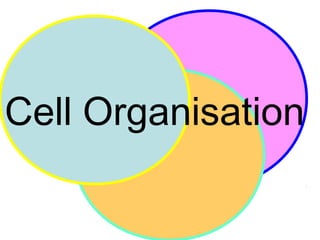The document discusses cell organization, highlighting unicellular organisms like amoeba sp. that perform vital functions independently. It outlines the structure and roles of various cell types in multicellular organisms, detailing different tissue types and their functions. Additionally, it covers processes such as feeding, locomotion, respiration, reproduction, and response to stimuli in both unicellular and multicellular organisms.
































